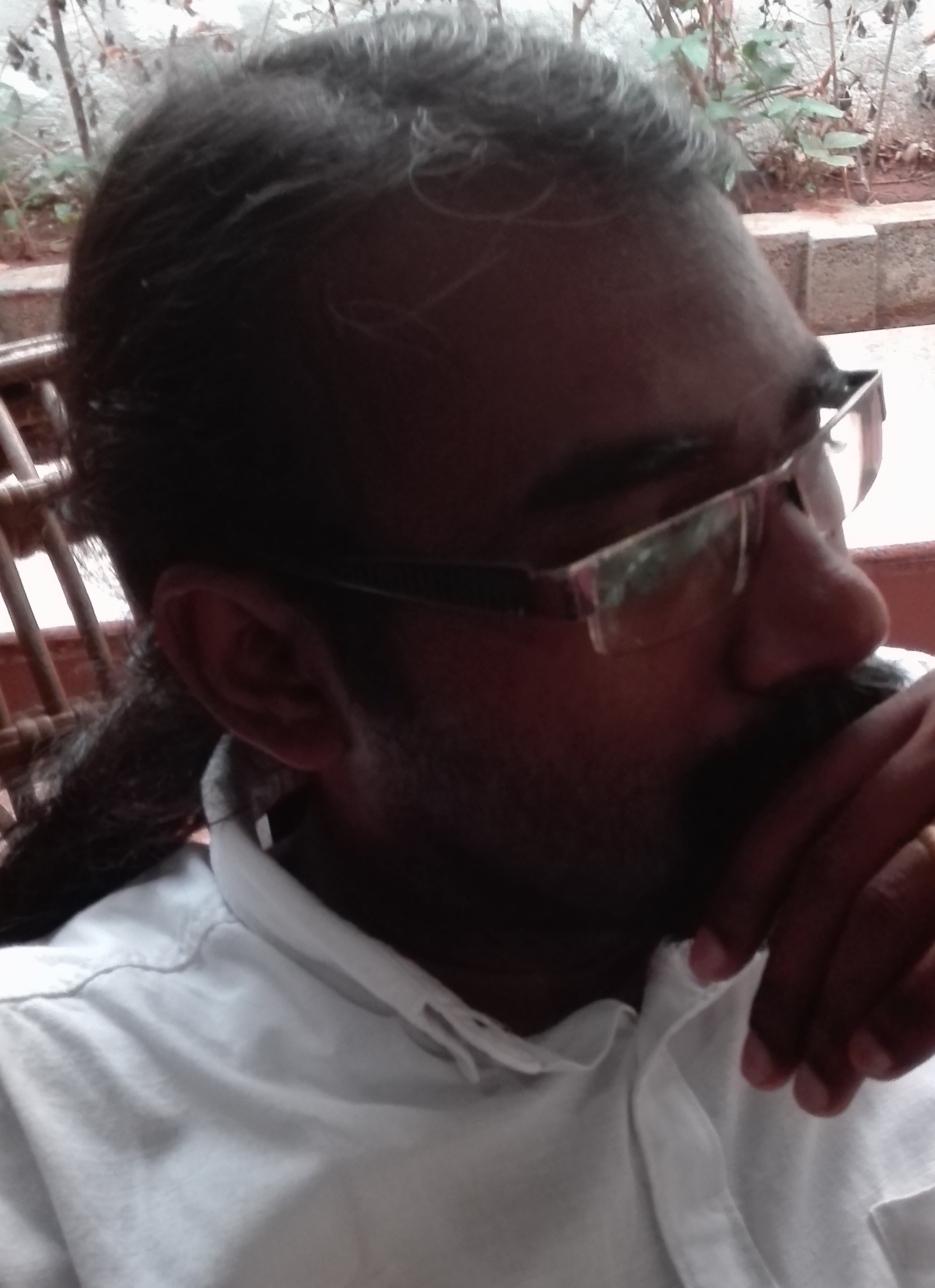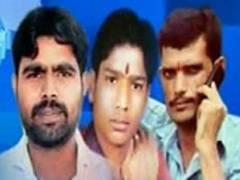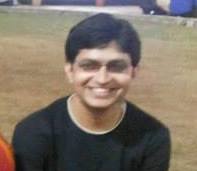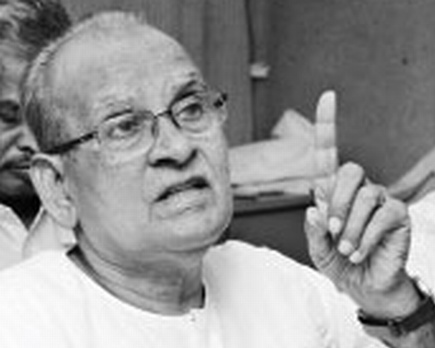Anilkumar PV
It is not without profound sorrow that one admits to oneself that in their highest flights the artists of all ages have raised to heavenly transfigurations precisely those conceptions which we now recognize as false: they are the glorifiers of the religious and philosophical errors of mankind, and they could not have been so without believing in the absolute truth of these errors. ~ Nietzsche
 One key problematic, along with a whole battery of other problematics, that has gone untheorized in the intellectual exercise that goes by the name of criticism, especially in the value-judgments and unbearably pushy and subjective pronouncements of critics like Asha Menon and K. P. Appan, is the sudden unfolding of an intense and dark flower called existentialism in the privileged world of Malayalam novel writing of the 60s. The reason, it seems to me, for the omission in theorization is that the critics, who have mindfucked Malayalis by bringing out the kernel of truth concealed behind the enigmatic flux of modern Malayalam novels, could not gauge the preconditions for the emergence of existentialism in the tiny corner of a large third world country.
One key problematic, along with a whole battery of other problematics, that has gone untheorized in the intellectual exercise that goes by the name of criticism, especially in the value-judgments and unbearably pushy and subjective pronouncements of critics like Asha Menon and K. P. Appan, is the sudden unfolding of an intense and dark flower called existentialism in the privileged world of Malayalam novel writing of the 60s. The reason, it seems to me, for the omission in theorization is that the critics, who have mindfucked Malayalis by bringing out the kernel of truth concealed behind the enigmatic flux of modern Malayalam novels, could not gauge the preconditions for the emergence of existentialism in the tiny corner of a large third world country.
Historically, historicizing an instance is anathema to the elite critics of Kerala. To remedy their natural deficiency of insight into the objective conditions of production of an epoch, the esteemed critics gulp down data ranging from pop science and pop psychology to metaphysics and medicine and bring out intellectual excreta which, helping in their intellectual free-floatism, can float on any water. But behind the flux and floatation device, there is history, which people sympathetic to marginal and microgroups and their micropolitical voicing cannot ignore. The gamble in the following pages is an attempt at recapturing that history, that is, to trace the terrains traversed by three so-called significant figures of modern Malayalam novel and to put its elitism and anti-subaltern content in its proper place.
Existentialism in its Kierkegaardian variety with the ominous reflections on the failed conditions of human existence has had a field-day in modern Malayalam fiction. From the political perspective of a third world country, the importation of costly stuff made in the philosophical laboratory of Europe was uncalled for at the time. All over the world, especially in the charged world of the 60’s oppressed, new subjectivities, hitherto silenced under the old critical paradigms and whose existence we always doubted, began to break the shackles that confined them and to confront the reality eyeball to eyeball with a body and self fashioned in a radically altered way.
It was the period of profound anti-colonial struggles in Africa and Latin America influenced by the experience of India and Pakistan. It was not simply that Africa was searching for new heights of humanity in Africa alone, but we saw some great moments of civil rights activities in the USA by the African Americans, a tradition the roots of which can be traced in the spirituality of various religious systems and in the materiality of Marxism and whose praxis, symbolically representable in diverse figures like the non-violent Martin Luther King to the militant Malcolm X and Elijiah Muhammad, generated compassion as well as fear in the minds of the white Americans. The black’s affirmation of the beauty of the black, a political stance that refused the totalitarian language of the grand narratives of the Enlightenment, was matched by the waking up of privileged class feminism of the white academics. (But one should not be blind to the teaching of the formidable African American feminist, bell hooks: in both instances, the experience of the black woman was sidelined with ruthless theoretical force and ignorance). In the far advanced capitalist countries like the USA and France, students began to perceive the sudden swerve of the state towards the extreme right, and the consequent silencing of all oppositional voices with the assistance of ideological and repressive apparatuses. This realization initiated a rejection of the old-fashioned party framework since the new conceptual categories developed at the time of the protest surpassed the Stalinist centralist framework of the party. The sixties were also the period of the emergence of the consciousness of various indigenous communities whose selves had been slenderized by the brutal project of colonial exploration and penetration. The most powerful image of the sixties, as far as a third world subject was concerned, could be the collective resistance of the Vietnamese people against the ruthless military aggression of the U S A.
These were some of the movements that could easily be identifiable by the writers of the elitist origin from Kerala since their intellectual experience, as the jargon goes, was shaped by a total commitment to the cause of the downtrodden in a rhetoric fashioned along the fist-shaking slogans of international communism. But they failed to recognize the zest behind the emergence of the new. Instead of celebrating the emergence of new subjectivities all over the world, they looked at the failure of the so-called collective experiment of the Soviet state and its expansion into Eastern Europe, militarily as well as politically. To cope with the grim situation caused by the haunting of a ghost known as state socialism and alienated bureaucracy all over Eastern Europe, the elites of Kerala imported wholesale the nihilist tendencies inherent in certain traditions of existentialism. At this precise moment, if we ask the Kantian question pertaining to the epistemological condition of possibility (of the importation of nihilism), then we can see that this transshipment serves an alibi for a profound abhorrence of the hegemonic for the social alteration that took place by the limited exercise of democratization in the metropolises in the early decades of independence.
A cursory glance at the biographical contours of the three writers who were the licensees for importing nihilism wholesale to Kerala will inform us that their peregrination, metonymically and metaphorically, has some semblance. One, the triumvirates, O. V. Vijayan, Anand and M. Mukundan, belong to a stratum of society that was never at the receiving end of the hierarchical exercise of static power, which is the result of, to use Marx phrase, the ‘hereditary division of labor’. Two, while O. V. Vijayan and M. Mukundan come from Malabar, a place, still in the sixties, rocking under the excessive weight of the residual tendencies of a crepuscular mélange of feudalism and colonial oppression, Anand belongs to Irinjalakkuda, which is fifteen minutes drive from the south-west border of Malabar. The point I want to hammer home is: the feudal socio-political economy that was in existence until the formation of Kerala had given them enough space to dream about their own distinct subjectivity, a luxury people like women or adivasis could not afford at that moment. Third, they were all, after having obtained a powerful command over a colonial language, forced to migrate to the metropolis located outside Kerala in search of a job. Fourth, all of them produced their magnum opus, if the Latin word makes any sense in the contemporary world of fast-changing theoretical speculations before they turned thirty. Lastly, perhaps the most striking of all, even after having obtained a commendable excellence in a foreign language and a sensibility formulated by an avid reading in a foreign tongue, none of them tried, as Samuel Beckett did, to write in a foreign tongue. The commonplace accusation against Anand’s Malayalam, that it is Malayalam written in English structure, and the mastery of a style displayed by Vijayan in his own English rendering of his works are enough proof that these writers from Kerala did not write in English not because they could not do so but because they realized what they really aspired to communicate was not really shared by the Indian middle class of the metropolis. Instead, consciously or unconsciously, they turned to their constituency, the feudal world of Kerala and its informed aristocrats. Whence comes the nihilism.
As early as 1944, in a poem titled ‘Assam Panikkar (The Workers in Assam)’, Vailoppilly spotted the dilemma of the people of Kerala when he talked about the mass exodus of Malayalis to the Indian Army that was busy defending the eastern border from the onslaught of Japan in the Second World War. Even though they left the place by ‘big train’, they were in fact ‘crawling on their belly’ since ‘this land which is a paradise for the guests is for them a treacherous old woman’, offering nothing for her own kids. But when they returned from Assam after the end of the war, they learned the Hegelian dictum very well that ‘true evil lies not in the object perceived as evil but in the innocent gaze which perceives evil all around’. The experience of war, torture; violence; blood; death; starvation; malaria, offered them a fresh insight into the unproductive, stagnant and poverty-ridden economy of the then Kerala. And here the poet would come up with two unforgettable lines that would go on to fashion the political unconscious of a society marked by a love-hate relationship with its region: “To love here; to desire here; to grieve here, to do that is jouissance”.
But then Vailopilly was responding to the wartime economy, an economy that was inflationary because of the strains and uncertainties existed and also caused by Britain’s decision to pay her share of defense expenditure by giving sterling credits. In the sea of starvation, of low food supply and a high prize if those illiterate and semi-literate Malayalis, who went in search for a job in the lower rung of the Army, found jouissance in the act of sharing one’s starvation with one’s family, then it was justifiable. But for the next generation of migrants there was no such justification because they were part and parcel of the grand scheme of nation building initiated by the universal citizen, Prime Minister Nehru. Unlike Assam workers, they were not thrown from the frying pan of Kerala to the Japanese fire. Though migration was forced upon them, their peregrination was to the concrete jungles of the modern metropolises like Mumbai, New Delhi and Kolkata rather than to the real jungles in the Northeast. This displacement from a feudal chronotope, where the cognitive mapping of the contours of the mental and bodily experiences was possible and space-time remained in a permanent state of static continuity, to the time-space of the metropolis, in which flux, excesses, changes, and alienation are the order of the day, had a drastic impact on the psyche of the newly migrated Malayali elite. The shock, cultural as well as political, that the change in the geographic locale brought about was fought actively by creating a mythical world locally. Paul Virilio, in a succinct observation, remarks how the classical French example of the palindrome (Esope reste ici et se repose), where Aesop stays here and rests, is amputated of its idyllic content in the contemporary reading back in time: “…..today, no one stays at rest, all is in flight and is displaced in a strange inverse transmigration. The habit of returning to our source, of rediscovering our origins, our ‘identity’, suddenly seems an absolute necessity.” That is exactly why both Vijayan and Mukundan travel business class from New Delhi to the mundane realities of ‘Khasak’ and the ‘Banks of River Mayyazhi’. This reverse and imaginary migration to the magical land of folkloric diversity, a dream world from which they are alienated in the beginning itself through their education in colonial language and reason, forces upon them an alienated world; the rules of the game in their mythical world are as complex and undecipherable as they are in the modern world. Even though the prohibitions, the libidos, the desires and the laws of mythical worlds are founded upon the split of the Real into nature and culture, just as they are in the modern world, when the writers mystify the mythical world and vomit the old, half-digested vine of nostalgia through modern mouths, what is gone astray is an Adornian knowledge that enlightenment and reason’s domination over earth and other people cannot be confined within the frame of any particular historical context. At the colossal moment of twentieth century Western philosophy, in their incomparable work The Dialectic of Enlightenment, Theodore W. Adorno and Marx Horkheimer maintain that when Ulysses plugged the ears of his men so as to prevent them from listening to the enchanting songs of the Sirens and forced his people to row with all their might, he was also using the same instrumental rationality that the modern-day bureaucrat uses in order to control the people of the modern state. The tragedy of the wholesale dealers of mythical complexities is that not only do they miss this point but also they fail to recognize the point that the creation of a mystical world is itself the product of instrumental rationality.
And their ‘eternal return to the zero degree of history’ finally brings out the kernel of truth concealing behind the materiality of their skin, the Lacanian Real, ‘the peeled off skin’: that there is nothing behind this skin and if you try to peel it off, you will scream like Kurtz: “the horror”.
In Anand the procedure is complex, like the Manglish that he uses for his novels. Anand does not attempt to accomplish a backward journey; instead, he attempts in Aalkkoottam with a scientific bent of mind to cognitive map the entire contours of the city fabric of pre-contemporary Mumbai and the way a citizen is constructed and manipulated by the fallen city fabric. As one of his characters remarks, “There is no address or background for the people who assemble at Choupatti. Everybody is a stranger to everybody. There they meet not as individuals but as the pieces of a crowd.” What is amiss in the poetics of the disappearance of the distinct individuality is the presence of a reverse force-field that offers the silenced people a floating identity as opposed to the static and fixed caste identity in the feudal village. From this perspective, it becomes absolutely necessary for us to unearth the absent hero who structures the entire narrative framework of Anand’s novel that refuses to go back in time. The protagonist who emerges in such an against-the-grain reading is Anand himself: the dominant and domineering individuality the subjectivity of which was formed in the feudal village itself. No wonder, a lower-middle class elite, who went to the metropolis in search of a job, would find the meandering through the crowded street in anxiety is unbearably difficult since working for a livelihood, something a democratic society demands of every citizen, has never been a scheme of things of the life-world that he had in Kerala. In the political economy of feudalism, all people like him needed to do was to blindly believe in the primordial scheme of Hindutva philosophy that assigned hereditary jobs to each person. And the rest was okay. And the demands of a society that started its democratization, a process that has not reached the halfway mark even now, was too hot for people like him to handle. And Anand’s “Alkkoottam” will remain in the consciousness of many marginalities a stunning monument that has registered its protest against the ethics and politics of democracy.
This is the context, a society that was slowly getting democratized, to which they imported ‘the absurdity of human condition’. But the political unconscious of the Nehruvian socialist framework was careful enough to do the necessary customs checks to see to it that the political radicalism of a Sartre who wrote the preface of Franz Fanon’s revolutionary work or who tried to give representation to young black poets (I am conscious of Fanon’s disillusioned remark on that effort) never gets through. Worse still, it took three more decades for Fanon to escape the customs formalities and enter the aristocratic world of Malayali radicalism. But Kafka, the photographer of alienated and labyrinthine bureaucracy had a strategic role to play in their scheme because they had a first-hand experience of the might of the Nehruvian centralist bureaucracy. Anand has, to put it mildly, spent an entire life playing on the state-citizen binary, which for Vijayan was a short-term strategy during the emergency after which he, with penitence, gestured his covert solidarity with the Hindutva that was to emerge aggressively nationwide. At times, in his own characteristic dried-out way, Anand evokes the structuralist Marxist, Louise Althusser. There are ideological institutions, like schools, media, and colleges that on a daily basis impart the know-how to become good citizens by taming the bodily and mental excesses of an individual in tune with the demands of the nation-state. And if the individual resists the taming process of the state, then the state always has the prospect of resorting to the assistance of repressive apparatuses like the police and army to control the deadly dance of the individual with surplus energy.
Here ends the similarity between Anand and Althusser. In Althusser, there is always a third term, namely interpellation. In other words, in Althusser’s formulation, everybody is not a citizen of the nation-state but those who are interpellated by the nation-state as citizen. A closer reading of Althusser would suggest the idea that each and every political formation of the bourgeoisie is incapable of interpellating all the creatures within and that there always remain in the margin of the bourgeoisie nation state certain people who have never heard the call ‘hey you there’. But Anand’s conception of the citizen is very simple: his idea of a citizen is extended to all the people living within the geographic confinements of the nation-state. This short-circuit between state and citizen enables him to project his own liberal humanist anxieties to the body and psyche of every person without bothering to inquire whether everybody is lucky enough to be identified by this nation-state as its citizen. So the liberal humanist anxiety of the elite becomes the anxiety of everybody. In this very process of ivory tower humanism, this liberal humanist, like the early liberal humanist of the West who failed to extend ‘the rights of man’ to the slaves in the plantation, or the Jews in the ghettos, or the woman in their own households, fails to extend the rights that he enjoys to the less privileged group. And I guess I am justified in evoking Alain Badiou here: if freedom is that of politically and ideologically resembling Anand, then it is assuredly better not to be free.
This is an excerpt from the author’s forthcoming book. Please don’t reproduce without permission.
~~~
Anilkumar Payyappilly Vijayan is Assistant Professor of English at Government Victoria College, Palakkad, Kerala. He has a PhD in English from Kannur University. His doctoral dissertation titled “Untouchability of the Unconscious: Containment and Disfigurement of Dalit Identity in Malayalam Cinema” makes, with the help of Lacanian psychoanalysis, a methodological inquiry into the logical aspects of the construction of Dalit identity in Malayalam cinema.










